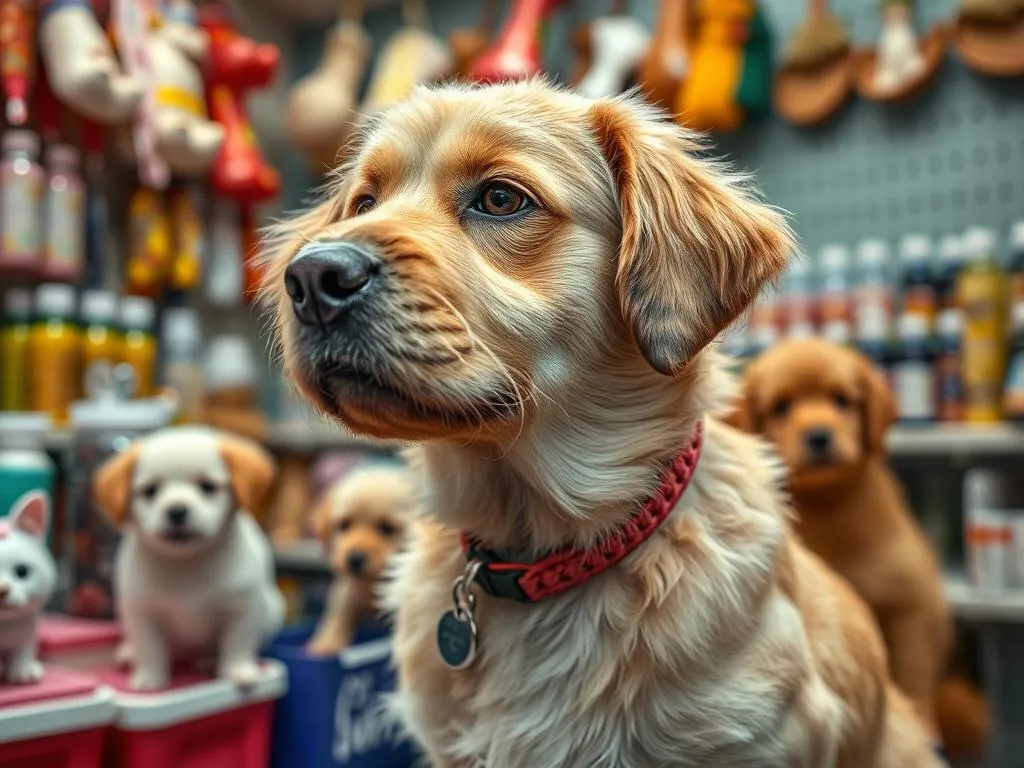
Introduction
In today’s society, the question of what do pet stores do with unsold animals has become increasingly relevant as consumers become more aware of animal welfare issues. The treatment of unsold animals in pet stores raises significant ethical concerns, prompting discussions among pet lovers, animal rights activists, and consumers alike. Understanding the fate of unsold animals can illuminate the broader implications of our purchasing choices and their impact on animal welfare.
By delving into this topic, we can better understand how our decisions as consumers can influence the treatment of animals in retail settings. This knowledge empowers us to make more informed choices that align with our values and support ethical practices in pet ownership.
Overview of Pet Stores
Types of Pet Stores
Pet stores come in various shapes and sizes, each with its unique approach to animal retailing. Understanding the different types of pet stores is essential to grasping how they operate and what practices they employ regarding unsold animals.
-
Chain Stores vs. Independent Stores: Chain pet stores are part of larger corporations and often have standardized policies and practices. Independent stores, on the other hand, may offer a more personalized experience and may have more flexibility in their operations.
-
Specialty Pet Stores: Some pet stores focus on specific types of animals, such as reptiles, birds, or fish. These specialty stores often have a deeper knowledge of the needs and care of the animals they sell.
Common Practices in Pet Retailing
Pet stores vary in how they source animals and care for them once they arrive in-store.
-
Sourcing Animals: Many stores obtain their inventory from breeders or wholesalers, while others may collaborate with local shelters to provide a home for adoptable pets. The sourcing practices can significantly impact the welfare of the animals involved.
-
Care and Maintenance: Proper care for animals in-store is paramount. This includes providing adequate space, nutrition, and veterinary care to ensure the well-being of the animals until they find a new home.
Lifecycle of Animals in Pet Stores
Acquisition of Animals
The lifecycle of animals in pet stores begins with their acquisition.
- Pet Store Inventory: Pet stores usually acquire their animals through breeders, wholesalers, or sometimes, from rescue organizations. Understanding this process can shed light on the ethical implications of purchasing a pet.
Sales Process
Once the animals are in the store, various sales strategies are employed to encourage purchases.
-
Sales Strategies: Pet stores often use promotional tactics, seasonal sales, and special events to boost sales. For instance, they might offer discounts during holidays or pet adoption events to attract potential buyers.
-
Seasonal Trends: The demand for pets can fluctuate with the seasons, leading to varying sales success throughout the year.
What Happens to Unsold Animals?
In-Store Care and Management
When animals do not sell quickly, pet stores must implement specific strategies to ensure their well-being.
-
In-Store Care: Unsold animals may remain in the store for an extended period. During this time, the store must provide adequate care, including proper feeding, socialization, and veterinary attention, to keep the animals healthy.
-
Duration of Stay: The length of time an animal stays in the store can vary significantly based on the store’s policies, the type of animal, and the demand for pets in the area.
Return to Breeders
One common practice among pet stores is returning unsold animals to breeders.
-
Return Policies: Many pet stores have agreements with breeders that allow them to return unsold animals. While this may seem like a viable solution, it raises serious questions about the welfare of the animals and the conditions they face upon return.
-
Implications for Animal Welfare: Returning animals can lead to uncertain fates, especially if breeders do not prioritize the well-being of their animals. This practice can perpetuate a cycle of neglect and abandonment.
Euthanasia Practices
In some unfortunate cases, euthanasia becomes a consideration for unsold animals.
-
Euthanasia as a Last Resort: While most pet stores aspire to avoid euthanasia, it can sometimes become a last resort for animals that remain unsold for an extended period.
-
Statistics and Ethical Considerations: The decision to euthanize animals is fraught with ethical dilemmas. Various organizations have reported statistics on euthanasia rates in pet stores, and these numbers raise significant concerns about animal welfare practices in the retail sector.
Adoption Initiatives
In response to growing concerns about animal welfare, some pet stores have begun to implement adoption initiatives.
-
Programs Encouraging Adoption: Many pet stores have started collaborating with local shelters to promote animal adoption. These programs can help find homes for animals in need while providing potential pet owners with a more ethical option.
-
Collaboration with Local Shelters: By partnering with shelters, pet stores can help reduce the number of unsold animals and contribute positively to the community’s overall animal welfare efforts.
Alternatives to Pet Stores
Animal Shelters and Rescues
For prospective pet owners, animal shelters and rescues offer an ethical alternative to purchasing from pet stores.
-
Advantages of Adopting from Shelters: Adopting from shelters often comes with several benefits, including lower adoption fees, the opportunity to save a life, and the chance to support organizations committed to animal welfare.
-
Success Stories: Numerous success stories highlight the positive outcomes of adopting from shelters, where animals find loving homes and families.
Responsible Breeders
Another alternative to pet stores is seeking out responsible breeders.
-
Identifying Ethical Breeders: Not all breeders are created equal. Responsible breeders prioritize the health and well-being of their animals, providing proper care and socialization before placing them in new homes.
-
Importance of Breeding Standards: Understanding breeding standards can help potential pet owners make informed decisions about where to source their pets.
Consumer Responsibility
Making Informed Choices
As consumers, it is vital to research and understand the implications of our choices concerning pet ownership.
-
Researching Pet Stores: Before purchasing a pet from a store, consumers should investigate the store’s practices, including sourcing, care, and policies regarding unsold animals.
-
Understanding Animal Welfare: Being informed about animal welfare issues can help consumers make decisions that align with their values and support ethical treatment.
Supporting Ethical Practices
Consumers can advocate for better treatment of animals by supporting ethical practices within the pet retail industry.
-
Advocating for Animal Welfare: Engaging with local animal advocacy groups, participating in community events, and raising awareness about the treatment of unsold animals can contribute to positive change.
-
Engaging with Local Advocacy Groups: By supporting local organizations fighting for animal rights, consumers can help push for better laws and regulations in the pet industry.
Conclusion
The journey of unsold animals in pet stores is a complex issue that encompasses various practices and ethical considerations. From in-store care and potential returns to breeders, to the distressing possibility of euthanasia, the fate of these animals deserves our attention and action.
As consumers, we hold the power to influence the treatment of animals in retail settings through our purchasing choices. By considering alternatives like adoption and supporting responsible breeders, we can advocate for better treatment of animals and contribute to a more compassionate society.
By raising awareness about the fate of unsold animals in pet stores, we encourage a broader conversation about animal welfare and the responsibilities we carry as pet owners and consumers. Understanding what do pet stores do with unsold animals is not just an academic inquiry; it is a vital step in fostering a world where all animals receive the care and respect they deserve.









